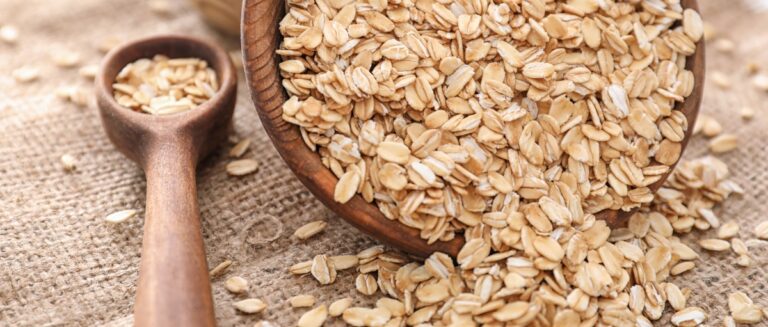In the isolated mountain villages of Sardinia, Italy, a Mediterranean island, there are nearly 10 times more centenarians per capita than the rest of Italy and an astonishing 20 times more than the United States.
According to longevity experts, Sardinia is a “Blue Zone“—a rare geographic pocket where people experience the longest living, extraordinarily long, healthy lives.
Sardinians’ secret to longevity lies in their traditional diet rich in plant-based whole foods such as vegetables, legumes, whole grains, and fruits, providing essential nutrients and antioxidants. Their diet includes minimal meat consumption, with protein sourced from plants and goat and sheep dairy. Moderate consumption of Cannonau red wine, rich in flavonoids, is also typical and contributes to lower heart disease risk. Their eating patterns, which include the most significant meal at midday and moderate daily calorie restriction, are associated with better weight control and longevity.
The Father of Blue Zones
Dan Buettner, National Geographic Fellow, has conducted groundbreaking research on longevity and well-being, focusing on areas where people live so long and healthy lives, known as “Blue Zones.”
Buettner delved into these communities’ lifestyles, diets, and social structures through meticulous research and observation. He discovered remarkable commonalities among these Blue Zones, including a strong sense of purpose,plant-based diets, regular physical activity, and deep social connections. His findings have revolutionized our understanding of aging and inspired countless people to adopt healthier habits.
The Sardinian Diet
Walk into any Sardinian village, and you’ll likely spot a curiously high number of sprightly centenarians – particularly men. Their secret? A large part of it is their distinct traditional diet, which is rich in nutrients and low in harmful ingredients.
Plant-Based, Whole-Foods Focus
The Sardinian diet is centered around plant-based whole foods, such as vegetables, legumes, whole grains, and fruits, which provide a variety of nutrients and fiber.
- Minestrone soup packed with beans and fresh vegetables
- Whole-grain bread called pane carasau
- Fava beans, chickpeas, and other legumes
- Tomatoes, eggplants, zucchini, and more fresh produce
Contrary to popular low-carb trends, Sardinians get up to 47% of their daily calories from whole grains. This practice is wise, as it results in low rates of diabetes and heart disease.
Meat as a Rare Treat
The traditional Sardinian diet minimizes meat consumption, primarily for flavoring dishes, serving it in small portions, or reserving it for special occasions. Instead, the diet mainly relies on plant-based sources of protein. It also includes plentiful goat and sheep dairy products, less common in other dietary traditions.
The Magic of Goat and Sheep Milk
One unique facet of the Sardinia diet is the prominence of goat and sheep milk products. Pecorino cheese made from grass-fed sheep is a daily staple. Compared to cow’s milk, goat’s and sheep’s milk are higher in omega-3 fatty acids and conjugated linoleic acid (CLA), which have powerful anti-inflammatory properties.
The Sardinian cheese Casu Marzu, also known as “rotten cheese,” goes further. Producers ferment this sheep milk cheese to contain live insect larvae, contributing to the umami flavor and potentially introducing beneficial bacteria. Although an acquired taste, Sardinians swear by its health properties.
A Daily Glass of Cannonau Wine
Another common feature on the Sardinian table is Cannonau red wine. Sardinians drink this wine daily, but in moderate amounts, usually one to two small glasses with a meal. Cannonau contains two to three times more flavonoids (natural compounds with antioxidant effects) than other wines. Some researchers believe this contributes to Sardinians’ low heart disease and stress levels.
Specific Longevity-Promoting Foods
Certain foods stand out in the Sardinian diet for their potential longevity benefits:
- Sourdough bread has a low glycemic index, meaning it doesn’t spike blood sugar
- Barley contains high levels of beta-glucans, a type of fiber that lowers cholesterol
- Almonds and other nuts provide healthy fats, fiber, protein, and minerals
Sardinians prefer nutritionally rich foods, even in their desserts. For example, almond cookies and goat milk yogurt, packed with nutrients, are often enjoyed with a drizzle of honey.
Eating Patterns Matter
Sardinians also structure their eating differently. Their largest meal is midday, and dinner is the smallest—a pattern associated with better weight control. They also practice a moderate form of daily calorie restriction, consuming about 2,000 calories daily. Studies show this can lead to longer lifespans by reducing oxidative stress and inflammation.
Putting It Into Practice
While you may not have access to fresh Sardinian seadas or Casu Marzu, you can still incorporate the principles of the Sardinian diet:
- Plants are the centerpiece of your plate, and you should aim for 6-10 servings of vegetables and fruits daily.
- Choose whole grains like oats, barley, and whole wheat over refined versions.
- Limit red meat once or twice weekly, favoring plant proteins, fish, and dairy.
- If you tolerate dairy, try high-quality sheep or goat milk cheeses.
- Enjoy a glass of red wine with dinner, but keep it moderate.
- Eat your largest meal mid-day and your lightest meal at dinner.
- Practice gentle calorie restriction by cutting out empty calories and snacks.
By shaping your eating around these Sardinian principles, you’ll be well on your way to a longer, healthier life. But diet is just one piece of the Blue Zone puzzle. We will explore how the Sardinian lifestyle and environment contribute to their remarkable longevity.
The Power of Family, Friends, and Purpose
Beyond their unique diet, Sardinians’ remarkable longevity is also deeply rooted in their lifestyle. Their strong family bonds, community ties, sense of purpose, and active lifestyle contribute to their extraordinary health and vitality in old age.
The Strength of Family
In Sardinia, family is everything. Elders are not shuffled off to nursing homes but live with or near their adult children and grandchildren. This multi-generational living arrangement provides both practical support and emotional fulfillment.
Grandparents help care for young children, passing on wisdom and traditions. In turn, their families value and care for them as they age. Studies show this intergenerational connection lowers rates of depression and stress, both of which can shorten lifespans.
The Power of Community
Sardinian villages are incredibly close-knit, with neighbors checking in on each other daily and people of all ages gathering in the streets each afternoon to socialize and laugh. Festivals and traditions unite the whole community, creating a strong social fabric that provides a sense of belonging and support. This close community connection translates to actual health benefits.
A Sense of Purpose
Sardinians value active roles for elders within their families and communities, encouraging continued contributions and knowledge sharing with younger generations.
This feeling of being needed and valued is critical. Studies link having a sense of purpose to lower the risk of disability, cognitive decline, and death as we age. One study found people with a strong sense of purpose had a 30% lower rate of dementia.
Always on the Move
Sardinians, particularly those from shepherd traditions, don’t pump iron at the gym. Instead, their lifestyle incorporates near-constant, low-intensity physical activity. Shepherds walk five miles or more daily over hilly terrain while elders fetch water from the village well, hand-knead bread, and maintain vegetable gardens. Even at an advanced age, this regular movement is profound for health.
Research shows that 20 minutes per day of low-intensity activity like walking can lower mortality risk by 20%. Sardinians get far more than that built naturally into their days. The lesson? We don’t need intense workouts—just consistent movement.
A Stark Contrast
The Sardinian way of life starkly contrasts the prevalent patterns of social isolation, sedentary behavior, and disengagement during retirement.
Loneliness is considered a public health epidemic in the U.S. 27% of adults aged 60 and older live alone, which is higher than the 16% of adults in the 130 countries and territories studied.
Additionally, among all adults aged 18 and over, only 24.2% met the guidelines for aerobic and muscle-strengthening activities. 22.7% met only the guidelines for aerobic activity, 6.8% met only the guidelines for muscle-strengthening activity, and 46.3% still needed to meet the guidelines for either type of activity.
Being active in a community and engaging in physical activities allows people in Sardinia to live so long.
The Sardinian Environment: A Natural Prescription for Longevity
Nestled in the Mediterranean off the western coast of Italy, Sardinia’s geography and culture have played a significant role in shaping the longevity of its people. The isolation of its mountainous interior, in particular, has preserved traditional ways of life that keep Sardinians healthy and thriving well into old age.
The Relaxed Sardinian Rhythm
In Sardinia, life moves at a slower pace. Shops close for lunch and a mid-afternoon break. Meals are leisurely, often lasting for hours as multiple generations gather to laugh, debate, and savor each course. Work is not rushed but rather unfolds at a natural rhythm punctuated by ample time for socializing and rest.
This relaxed pace sharply contrasts the high-stress, always-on-the-go daily lifestyle in the U.S. and many other developed nations. Chronic stress has a significant impact on health, leading to inflammation, heart disease, and compromised immune function. Sardinians, who maintain a slower, more relaxed rhythm of life, appear to be largely protected from these stress-related health risks.
A Stunningly Healthy Environment
Sardinia’s interior features rugged mountains, ravines, and valleys. The region boasts clean air, water, and a mild climate with temperatures rarely exceeding 95°F (35°C) or dropping below freezing.
The natural environment in Sardinia is ideal for the outdoor, physically active lifestyle. Shepherds traverse mountainous terrain, and villagers gather to socialize outdoors. Elders tend gardens, orchards, and flocks, staying engaged with the natural world.
The pristine environment, the mild climate, and the outdoor lifestyle contribute to Sardinian longevity. Studies show that exposure to green space lowers stress, while sunlight-derived vitamin D is linked to lower blood pressure and improved immune function. In effect, the Sardinian environment acts as a natural prescription for lifelong health.
Unlocking the Sardinian Secret at Home
While most of us can’t pick up and move to an isolated Sardinian village, we can all learn from and adopt elements of the Sardinian approach to longevity. Here are some ways to bring the Sardinian secrets into your own life:
Eat Like a Sardinian
- Center your diet around plant foods: Aim for 7-10 servings of fruits and vegetables daily, along with plenty of beans, whole grains, and nuts.
- Use meat sparingly: Reserve meat for special occasions or use small amounts as a flavor enhancer rather than the meal’s main event.
- Choose healthy fats: If you eat dairy, choose olive oil as your primary fat, and if you eat sheep, goats, or other cheeses and yogurts with minimal processing.
- Drink moderately: If you consume alcohol, stick to one to two glasses of red wine with meals per day.
Live Like a Sardinian
- Prioritize family: Set aside regular time for family meals and gatherings. Consider multi-generational living arrangements or moving closer to family.
- Engage in your community: Attend local events, join clubs or groups that interest you, and nurture friendships.
- Find purpose: Identify ways to contribute and feel useful, such as volunteering, mentoring, or pursuing a passion project.
- Stay active: Build movement into your day through walking, gardening, or other activities you enjoy. Aim for a daily dose of nature, even a stroll through a local park.
- Slow down: Carve out ample time for meals, rest, and socializing. Prioritize leisure and downtime as much as productivity.
The Sardinian Secret, Unlocked
Sardinians attribute longevity to everyday choices and habits that promote a long, healthy life. They incorporate these practices into their daily lives, focusing on their eating, exercise, social connections, and outlook. They demonstrate that a long, healthy life stems from making numerous small choices and adopting daily habits that align with the body and spirit’s requirements for thriving.
The beauty of the Sardinian approach is that it is entirely adaptable, practical, and accessible no matter where in the world you call home. By shifting our diets, prioritizing our social connections, staying engaged and active, and slowing the speed of life, we can all channel that Sardinian centenarian wisdom.
It’s always possible to start optimizing our lifestyles for longevity. Whether you’re 30 or 90, minor changes informed by the Sardinian example can yield profound benefits for your physical health and sense of fulfillment. So start today—share a nourishing meal with loved ones, stroll in nature, extend a hand to a neighbor, or carve out a moment of purposeful pause. That is how we can all begin to unlock our Sardinian secret to a long, vibrant life well lived.
Sources
Blue Zones. (n.d.). Sardinia, Italy. Blue Zones. https://www.bluezones.com/explorations/sardinia-italy/
Blue Zones. (n.d.). History. Blue Zones. https://www.bluezones.com/about/history/
Blue Zones. (n.d.). Dan Buettner. Blue Zones. https://www.bluezones.com/about/organization/our-team/dan-buettner/
MDPI. (2021). The impact of dietary patterns on health outcomes. MDPI. https://www.mdpi.com/2072-6643/13/8/2540
Cambridge University Press. (2020). Goat milk fatty acid composition can be improved with high forage ratio and fish oil in the diet. Cambridge. https://www.cambridge.org/core/blog/2020/07/29/goat-milk-fatty-acid-composition-can-be-improved-with-high-forage-ratio-and-fish-oil-in-the-diet/
Cambridge University Press. (2020). Effects of dietary lipids and roughage level on dairy goat performance. Journal of Agricultural Science. https://www.cambridge.org/core/journals/journal-of-agricultural-science/article/abs/effects-of-dietary-lipids-and-roughage-level-on-dairy-goat-performance-milk-physicochemical-composition-apparent-transfer-efficiency-and-biohydrogenation-rate-of-milk-fatty-acids/A9BC8FCDE608D2B837F17DCB95F22DBE
Cheese.com. (n.d.). Casu marzu. Cheese.com. https://www.cheese.com/casu-marzu/
Blue Zones. (2017). Longevity link: How and why wine helps you live longer. Blue Zones. https://www.bluezones.com/2017/08/longevity-link-how-and-why-wine-helps-you-live-longer/
American Chemical Society. (1997). Fatty acids in foods: Composition and health benefits. ACS. https://pubs.acs.org/doi/pdf/10.1021/jf960705d
Journal of Ethnic Foods. (2022). Traditional and modern uses of ethnic foods: A review. BMC. https://journalofethnicfoods.biomedcentral.com/articles/10.1186/s42779-022-00152-5
National Library of Medicine. (2006). Dietary influences on cardiovascular health. PubMed. https://pubmed.ncbi.nlm.nih.gov/16793232/
National Center for Biotechnology Information. (2021). A review of physical activity recommendations and their impact on health. NCBI. https://www.ncbi.nlm.nih.gov/pmc/articles/PMC8887819/
World Health Organization. (2020). Physical activity. WHO. https://www.who.int/news-room/fact-sheets/detail/physical-activity
Pew Research Center. (2020). Older people are more likely to live alone in the U.S. than elsewhere in the world. Pew Research. https://www.pewresearch.org/short-reads/2020/03/10/older-people-are-more-likely-to-live-alone-in-the-u-s-than-elsewhere-in-the-world/
Centers for Disease Control and Prevention.(2023).Data brief: Social determinants of health and life expectancy. CDC. https://www.cdc.gov/nchs/products/databriefs/db443.htm#fig1











